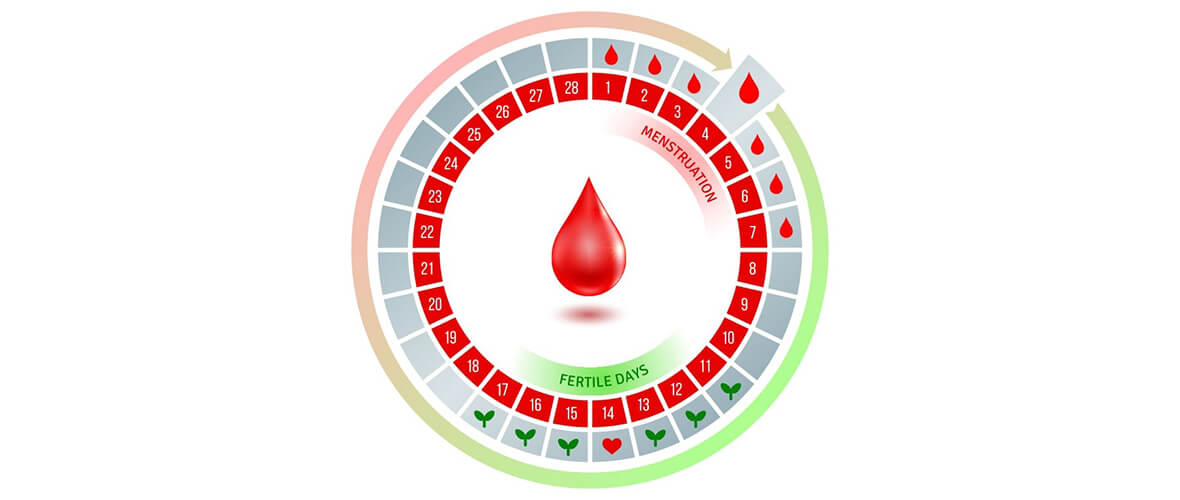Implantation bleeding can occur about 10-14 days after conception when the fertilized egg attaches to the interior lining of the uterus. This movement of the egg can result in light bleeding or spotting, which is completely normal and should not require any kind of medical attention. Generally, around a third of pregnant women will experience implantation bleeding. While similar in timing to a woman’s menstrual period, the two are different. Implantation bleeding is lighter than menstrual bleeding.
Implantation Bleeding Symptoms
Implantation bleeding is considered one of the early pregnancy symptoms (at least one of the first easily identifiable signs for a mother). Because implantation bleeding occurs near the time of her next period, many women are confused whether it is a possible pregnancy or a period. Here are other signs of implantation bleeding
- Light or faint cramping (less than a normal period cramp)
- Mood swings
- Headaches
- Nausea
- Breast tenderness
- Lower backaches
(These can also be PMS symptoms or ovulation symptoms, so having these along with pinkish/brownish spotting does not guarantee that it has to do with pregnancy.)
What Does Implantation Bleeding Look Like?
Implantation bleeding looks a bit different from the average woman’s period. It is important to remember that not all women have the same kind of blood flow during their menstrual period. Some will have a heavier flow during their period while others may experience a bit more unpredictability.
These Are the Key Differences Between Implantation Bleeding and a Period:
- Color: Whether heavy or light, most women are familiar with the color of their period (usually a bright to dark red). Implantation bleeding, however, is typically light pink to dark brown (rust-colored) in color.
- Clotting: Some women experience a great deal of clotting during their menstruation, while some do not see much at all. Implantation bleeding, however, should not present any clots.
- Amount: Most women are able to fill pads and tampons during their periods, but with implantation bleeding, it is different. The descriptor “bleeding” can be misleading – implantation bleeding is usually only spotting or a light flow rather than a full flow. Typically, implantation bleeding is a little pink or brown discharge only when a woman wipes or just enough to get on a pantyliner. It may be either intermittent or a more constant light flow.
How Long Does Implantation Bleeding Last?
Implantation bleeding should last only between a couple of hours to three full days. If the bleeding you are experiencing is bright or dark red blood, lasts more than three days, and is a full flow in that you are filling up pads/tampons, it it very unlikely you are experiencing implantation bleeding.
Women who are going through their first pregnancy will likely spot or bleed a little bit more than women who are used to the egg attachment. (It is similar to dental flossing of the gums as the first time the gum line is aggravated, it will bleed more, while subsequent times bleeding is lessened.)
However, if your menstruation cycle is shorter than normal (< 3 days), you did not fill up pads or tampons, it was more pinkish/brownish than red, and you had less cramping than normal, it is possible that you are having implantation bleeding.
Why Does Implantation Bleeding Happen?
About 10-14 days after conception (when the sperm joins with the egg), the embryo will implant itself into the wall of the uterus. This movement may break down some blood vessels within the uterus wall and cause some bleeding.
Menstruation occurs around 11-14 days after ovulation (when an egg is released & conception is possible), which is another reason why the two are often confused with one another. Some women may simply believe their period is a few days early. Implantation bleeding typically happens within the week before the expected period.
For example, if you are sexually active and expect your period on January 25th, then you might question any spotting you have between Jan. 18th – Jan. 25th as possible implantation bleeding. It is not common that implantation bleeding would occur before this time or after a period is expected or missed. However, if one experiences ovulation early in the fertility window and the implantation process is quick, or one experiences ovulation late in the fertility window and the implantation process is slow, it is possible.
Women know what their normal menstrual flow looks like, and as long as they are not on any kind of new medication (including birth control and emergency contraceptives) or have a change in stress level, then their menstrual blood flow, color, and consistency are usually the same. So, when this lighter, pink spotting occurs, it will appear a bit out of place.
Implantation Bleeding Concerns
Implantation bleeding should not be a cause for concern and should pose no real risk to the developing baby. If you experience bleeding or spotting more than a few days after your missed period, it is not likely to be implantation bleeding. True pregnancy concerns rarely come from implantation and usually occur after the missed period.
Though this post-implantation light bleeding during pregnancy is not considered normal, there are a few main reasons it may occur:
- Irritation of the cervix (especially following OBGYN exams)
- Irritation or small tears from intercourse
- Heavy or excessive lifting or exercise/exertion
- Vaginal infection.
At least 50% of women that experience spotting/bleeding (other than implantation bleeding) will go on to have a normal, healthy pregnancy.
Extended bleeding can be a sign of something more serious, especially further on during the pregnancy. Molar pregnancy or miscarriage are two concerns, which is why whenever visiting the OBGYN or other doctors, it is necessary to inform them of current or recent bleeding (especially if it is heavy), as well as any other symptoms you are experiencing.
In your first trimester, be sure to let your healthcare provider know about any spotting.
Let your healthcare provider know immediately about any spotting in your second or third trimesters.
If at any point during your pregnancy you experience heavy bleeding, contact your healthcare provider immediately or consider seeking emergency care.
For women going through nausea/vomiting, dizziness, abdominal pain (especially one-sided pain), it is possible you are experiencing an ectopic pregnancy, so inform your doctor right away. Cramping is normal during pregnancy, yet if the level of pain during cramping increases, it is recommended to contact a doctor.
Still Not Sure?
If you are not sure which type of bleeding you are having, we recommend waiting three days after the bleeding/spotting stops before taking a pregnancy test. You are welcome to contact our toll-free helpline at 1-800-672-2296 to speak with a pregnancy educator.
Often, taking a pregnancy test before the missed period or during implantation bleeding is just too soon for tests to offer conclusive results. Ideally, waiting a week after the spotting or missed period is most desirable as the results should prove more accurate.
Next Steps
Implantation bleeding is a sign of a potential pregnancy. If you have waited until after your period was due and taken a pregnancy test that delivered a negative result, there is a good chance you are not pregnant. Watching for implantation bleeding while trying to get pregnant is fine, but many women do not experience nor notice implantation spotting even when it does occur.
Want to Know More?
Compiled using information from the following Medical sources:
1. March of Dimes: “Pregnancy Complications.”
2. National Institute of Child Health and Human Development: “What Are Some Common Signs of Pregnancy?”
3. American College of Obstetricians and Gynecologists: “Abnormal Uterine Bleeding,” “Early Pregnancy Loss.”
4. Norwitz ER, et al. Overview of the etiology and evaluation of vaginal bleeding in pregnant women.
5. Moore KL, et al. Answers to clinically oriented questions. In: Before We Are Born: Essentials of Embryology and Birth Defects. 8th ed. Philadelphia, Pa.: Saunders Elsevier; 2013.
6. Frequently asked questions. Pregnancy FAQ038. Bleeding during pregnancy. American College of Obstetricians and Gynecologists.
https://www.acog.org/Patients/FAQs/Bleeding-During-Pregnancy
7. American College of Obstetricians and Gynecologists. Months 1 and 2. In: Your Pregnancy and Childbirth Month to Month. 6th ed. Washington, D.C.: American College of Obstetricians and Gynecologists; 2015.
8. Mayo Clinic FAQs







